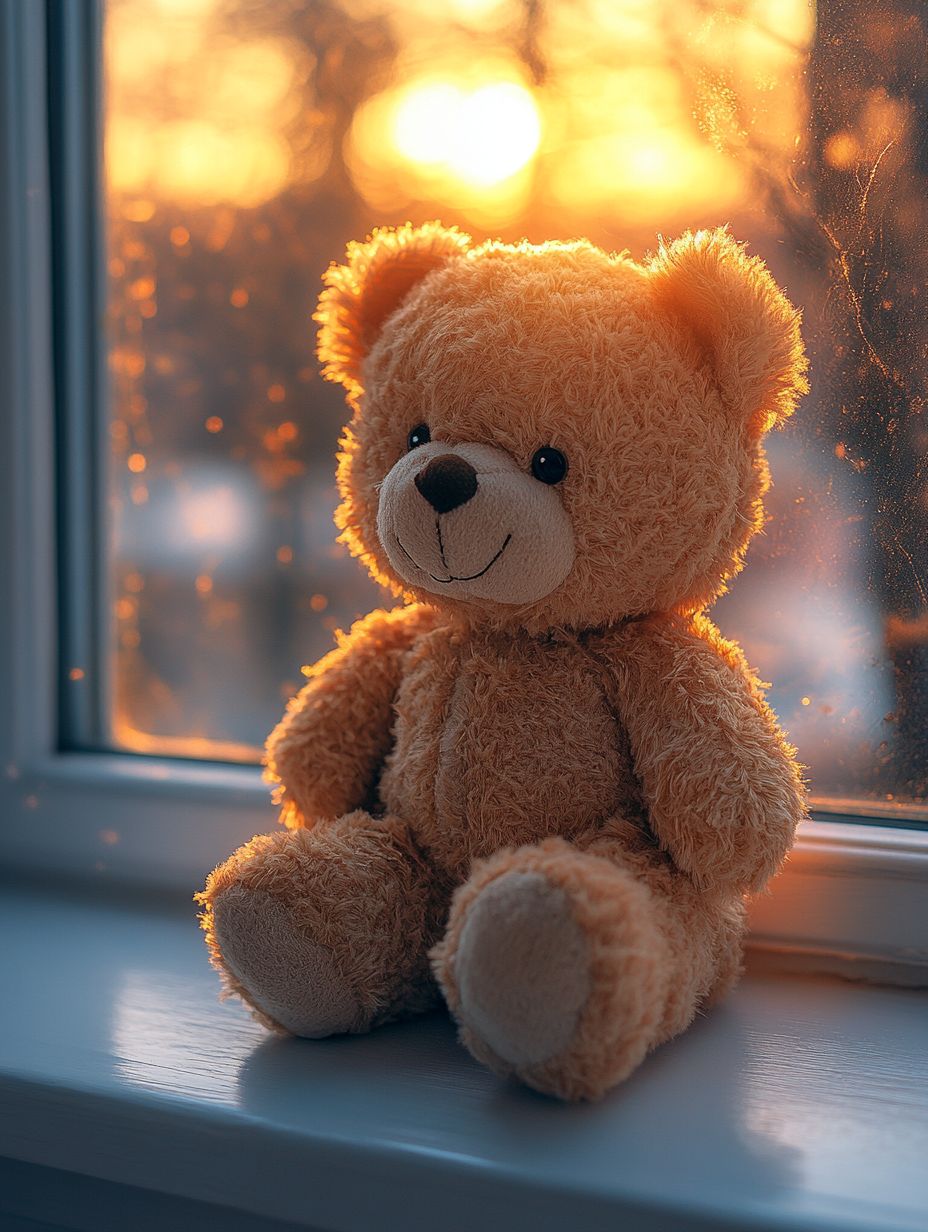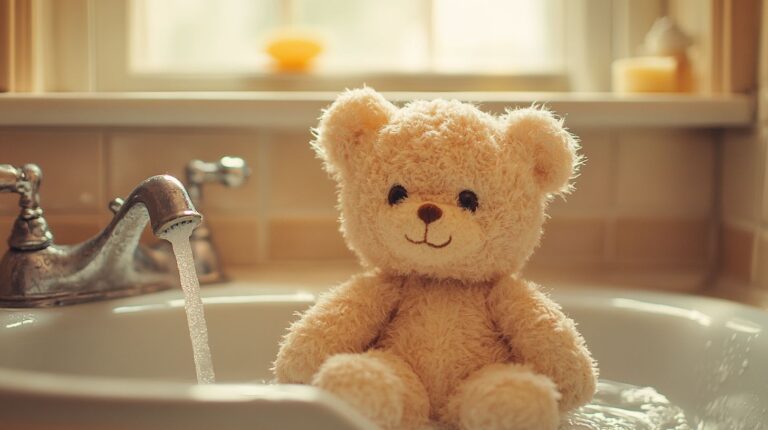Got a poorly teddy that needs mending? No worries – fixing a torn bear is actually quite straightforward when you've got the right bits and bobs at home. You'll want a decent sewing needle, thread that matches your bear's colour, and perhaps a dash of stuffing if things have gone really pear-shaped.
The ladder stitch is brilliant for those smaller tears – it's practically invisible once you've finished. For the more dramatic wounds, you might need to cut a little patch from similar fabric (an old matching jumper works a treat). Just remember to keep your stitches nice and tight, and always double-knot at the end. If you're feeling particularly cautious, a dab of fabric glue can give extra staying power to those well-loved bears that get dragged about everywhere.
Mind you, prevention's better than cure – proper storage keeps your furry friend in good nick. Pop them somewhere dry, away from direct sunlight, and they'll stay looking smart for ages. Rather satisfying, really, giving these treasured companions a new lease of life.
Key Takeaways
Got a torn teddy that needs mending? The ladder stitch works brilliantly for split seams – it's quite clever really, as the repair practically vanishes when done properly. Just work your needle parallel to the tear, and you'll be amazed at how neat it looks.
For those nasty tears in the fabric, I'd definitely recommend using both fabric glue and proper stitching to secure a patch behind. It might seem like overkill, but trust me – it'll last ages longer than using just one method.
When your bear's looking a bit deflated, polyester fibrefill does the trick. Mind you, it's worth taking time to get the stuffing just right – nobody wants a lumpy bear with a wonky head! Pop in small amounts and give it a gentle squeeze now and then to check the firmness.
If you spot any areas starting to wear thin, particularly around the arms and legs, don't wait for them to split completely. A quick whip stitch now could save you from a much bigger job later. Rather sensible, if you ask me.
Choosing the right thread colour is crucial – try to match it as closely as possible to your bear's fur. And whilst you're at it, make sure you're using proper needles. Those flimsy ones from pound shop sewing kits simply won't do for a proper repair job.
Common Teddy Bear Damages

Poor old teddy bears do take quite a beating, don't they? There are typically three ways they end up a bit worse for wear: split seams, limbs that've gone walkabout, and torn fabric. It's usually after a particularly energetic play session or an overzealous spin in the washing machine that these battle scars appear. Those pesky seams tend to give way first, especially round the arms and legs where they've seen the most action.
Loose limbs are a right pain, particularly with vintage bears. Sometimes they'll pop clean off at the joint, but more often than not, it's a gradual thing – like watching a wobbly tooth finally give up the ghost. When the stuffing starts pouring out like gravy from a Sunday roast, it might look dire, but there's hope yet. Those lovely old bears from the 1950s are especially prone to this sort of thing, having weathered decades of devoted cuddles.
The fabric tears can be proper troublesome, though. You'll spot them wherever your bear's been dragged through the mill or caught on something nasty. These days, the plush ones tend to go round the face first – probably because that's where little fingers do most of their exploring.
The older chaps, with their mohair coats and velveteen finish, might show wear in different spots altogether. Still, even if you've got a tear as long as your thumb, chances are it can be sorted with a bit of careful mending.
Essential Repair Tools
Getting your teddy bear repair kit sorted makes all the difference, really.
I'd recommend splashing out on proper sewing needles from the craft shop – those £3 sets are worth every penny compared to the cheap ones. Match your thread to your bear's fur, naturally, and treat yourself to proper fabric scissors rather than making do with kitchen ones.
Any decent haberdashery should stock polyester fibrefill for stuffing repairs – essential for giving saggy bears their cuddle factor back. A seam ripper's brilliant when you need to undo old repairs (we've all been there), and tweezers come in handy for fiddly bits.
If your bear's looking rather threadbare, keep some matching fabric pieces tucked away for patches. Don't skimp on a thimble – your poor fingers will suffer otherwise.
Those curved needles are absolute lifesavers for awkward spots, particularly when you're wrestling with tight joints. Rather than rummaging through an old biscuit tin, pop everything in a proper sewing box – makes life so much easier.
While you might manage without, a magnifying glass can be rather brilliant for those fiddly detailed bits.
Hand Stitching Methods
Getting to grips with hand stitching is essential for bringing treasured teddies back to life. While there are quite a few techniques to master, a handful of basic stitches will sort out most repairs rather nicely. I'm particularly fond of the ladder stitch – or invisible stitch as some like to call it – which works brilliantly for closing seams. Rather like the hidden details you'd find in a proper Savile Row suit, it leaves barely a trace.
| Stitch Type | Best Used For | Difficulty Level |
|---|---|---|
| Ladder Stitch | Closing seams | Moderate |
| Whip Stitch | Reinforcing edges | Easy |
| Blanket Stitch | Decorative finish | Challenging |
For smaller tears under 5 centimetres, start with a whip stitch to stabilise the edges before moving on to the ladder stitch. Keep your needle parallel to the fabric, working in tiny 2mm steps – though perfection isn't always necessary. The blanket stitch comes in especially handy for worn patches or larger holes, and it's brilliant for reinforcing joints where bears tend to get a bit wobbly. Mind you, whatever stitch you choose, always finish with a proper double knot. There's nothing worse than watching your careful handiwork unravel because of a loose thread.
Patching Torn Fabric
Patching torn fabric calls for a bit of patience and attention to detail – getting it right makes all the difference between a lovely repair and a messy patch-up job.
The trick is finding fabric that's a proper match for your teddy. Most decent craft shops have lovely felt and plush options for around £2 per square metre, though it's worth having a rummage through your sewing box first – you might find the perfect scrap hiding in there.
When you're ready to patch, cut your fabric generously – about a centimetre larger than the tear on all sides ought to do it.
Take care to brush the nap in the same direction as your bear's fur (rather like giving a cat a gentle stroke).
Pop the patch behind the tear, on the wrong side, and fold those edges under for a tidy finish.
Mind you, if your teddy's seen better days, you might need to trim away any tatty bits first.
The secret to a patch that'll last through countless cuddles and trips through the washing machine is to use both fabric glue and tiny, nearly invisible stitches.
Might seem like overkill, but this double-defence strategy really does work wonders.
Restuffing Your Bear
Giving Your Teddy Bear a New Lease of Life
It's amazing how our beloved teddy bears can start looking rather sorry for themselves after years of cuddles and adventures. When your furry friend begins to lose its shape, a bit of careful restuffing can work wonders.
Before diving in, you'll want to mend any tatty spots and create a decent opening. The stuffing you choose makes quite a difference – here's what tends to work best:
Polyester filling is brilliant for everyday bears and won't break the bank at £4-6 per 500g. It's properly washable too, which is rather handy.
Cotton wadding gives vintage teddies that lovely traditional feel, though at £7-8 per pack, it's a touch pricier.
Memory foam creates quite a firm bear (£12-15), whilst wool stuffing is perfect for precious family heirlooms, setting you back roughly a tenner per pack.
Getting started is straightforward enough – gently remove the old stuffing through your prepared opening.
Pop the new filling into the paws and legs first, using a chopstick or knitting needle to reach those fiddly bits.
Take your time working towards the middle – there's no point rushing it. A properly restuffed bear should feel wonderfully plump and ready for many more years of cuddles.
Preventing Future Tears
Preventing Future Tears
Once you've sorted the stuffing, keeping your teddy safe becomes the next challenge. Truth be told, most tears happen when bears get caught up in the rough and tumble of everyday life. Rather than chucking your furry mate into a toy box where zips and hard edges might snag the fabric, pop them on a shelf or tuck them into bed.
Got a really special bear? Perhaps a treasured Merrythought from your gran? These lovely old bears deserve a bit of extra care – think about getting a soft cotton drawstring bag or even a proper display case.
And when you're heading off on holiday, don't just cram your bear into an overstuffed rucksack. Wrap them gently in tissue paper and pop them in their own cloth bag.
A bit of prevention goes a long way, especially with well-loved bears. Sew small patches onto the inside of worn areas – particularly those bendy bits around joints and seams. A scrap of matching fabric about the size of a 5p works brilliantly with a dab of fabric glue.
If your bear gets regular cuddles (and why wouldn't they?), have a proper look each week for any loose threads or thin patches. Much better to catch these niggles early than deal with a proper tear later on.
Conclusion
Let's be honest – there's nothing quite like bringing an old teddy back to its former glory. With a bit of TLC and some careful stitching, you can easily sort out those bothersome tears and loose seams. I reckon most bears just need some gentle mending to be ready for countless more cuddles and adventures. Mind you, it's worth giving your furry companion regular once-overs to catch any wear and tear early on. Pop them somewhere safe when they're not being snuggled, and you'll save yourself from more serious repairs down the line. Rather like keeping your favourite woolly jumper in good nick, really – a few minutes' care now means years more companionship from your cherished bear.




